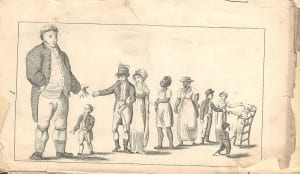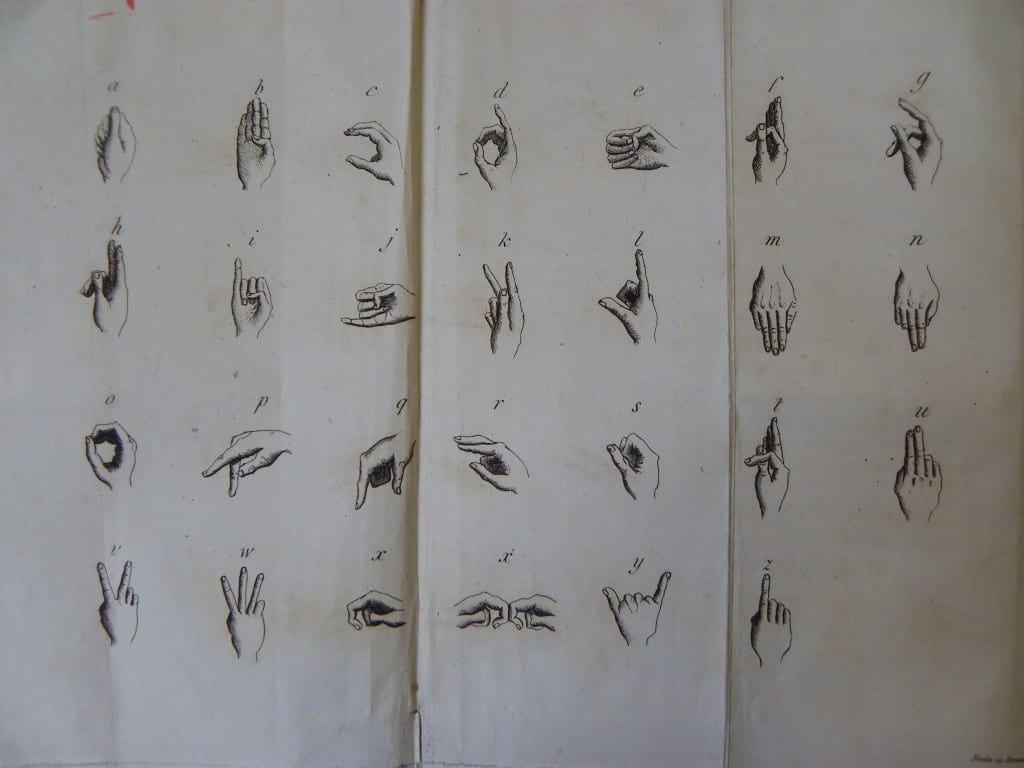As we have contributed a number of items to the DCAL sign alphabet exhibition 2nd- 25th of July, in the UCL north cloisters, we will be putting up some information about the items on the blog over the next days, based on the display label notes, with some pictures.
The first book has featured in a blog entry before:
Chirologia; or, The naturall language of the hand. Composed of the speaking motions and discoursing gestures thereof. Whereunto is added Chironomia; or, The art of manuall rhetoricke. Consisting of the naturall expressions, digested by art in the hand, as the chiefest instrument of eloquence, by historicall manifesto’s, exemplified out of the authentique registers of common life, and civill conversation, with types, or chirograms. A long-wish’d for illustration of this argument. By J.B., Gent. Philochirosophus… London, printed by Tho. Harper, 1644. by John Bulwer 1644
Bulwer (bap. 1606, d. 1656), was a doctor, who lived around Gray’s Inn in London.
One of only 31 known copies, Chirologia (which means ‘hand discourse’) was the first book in English that was devoted to the language of sign and gesture. It is possible that our copy belonged to the Deaf University of London graduate Abraham Farrar, as there is a note in Ephphatha (p.860 Winter 1925) says he is selling his collection of books, including his copy of Bulwer for £200.
Etymology: < French chirologie, < Greek χειρο –hand + -λογία – discourse.
“As the tongue speaketh to the ear, so the gesture speaketh to the eye.” So Francis Bacon quoted King James in his introduction to The Advancement of Learning. Aristotle had omitted gestures from his Organon & Bacon saw the close relationship between gestures & the mind. Bacon’s gentle criticism of Aristotle here was the inspiration for Bulwer to write his Chirologia, a term he introduced into English. It has been said of Bulwer that “his works more nearly approach modern psychology in character than those of his illustrious philosophical contemporaries.”
(Graham Richards, ‘Bulwer, John (bap. 1606, d. 1656)’, Oxford Dictionary of National Biography, Oxford University Press, 2004; online edn, Jan 2008 [http://www.oxforddnb.com/view/article/3934, accessed 12 June 2013])
Bulwer’s social circle seems to have been around Gray’s Inn, a short walk from the Action on Hearing Loss Library. He was buried in the nearby church of St.Giles in the Fields. This would have been the previous building on the site, the present building dating from 1730-34.
In The Comely Frontispiece: The Emblematic Title-page in England, 1550-1660, by Margery Corbett, the engraving by William Marshall is explained –
Standing on the plinth, l., six-breasted Nature with one hand pressed to her bosom gushes milk. […]
Readers must have found it over-elaborate and even puzzling. […] The theme, however is clear: the contrast between natural Language, left, unkempt and without graces, and right, Language rendered comely by gesture and deportment. The two combine in the Well of Chiroscopy, the wisdom of the hand.
Nature speaking, as mother of natural language, is portrayed as Ephesian Artemis […] Her foot, placed on the wheel of Fate or Fortune, is intended to signify that the gifts of fortune are the same as the gifts of nature or may supplement them. […] The presence of the tree behind her is explained by the tradition that the oracle at Dodona gave her answers by rustling the leaves of an old oak tree, ‘Dodona’s Oak’, and thus spoke in the words of Nature.
Polyhymnia was the muse of eloquence.
The full text is available here.
Click for a larger size.

 Close
Close














